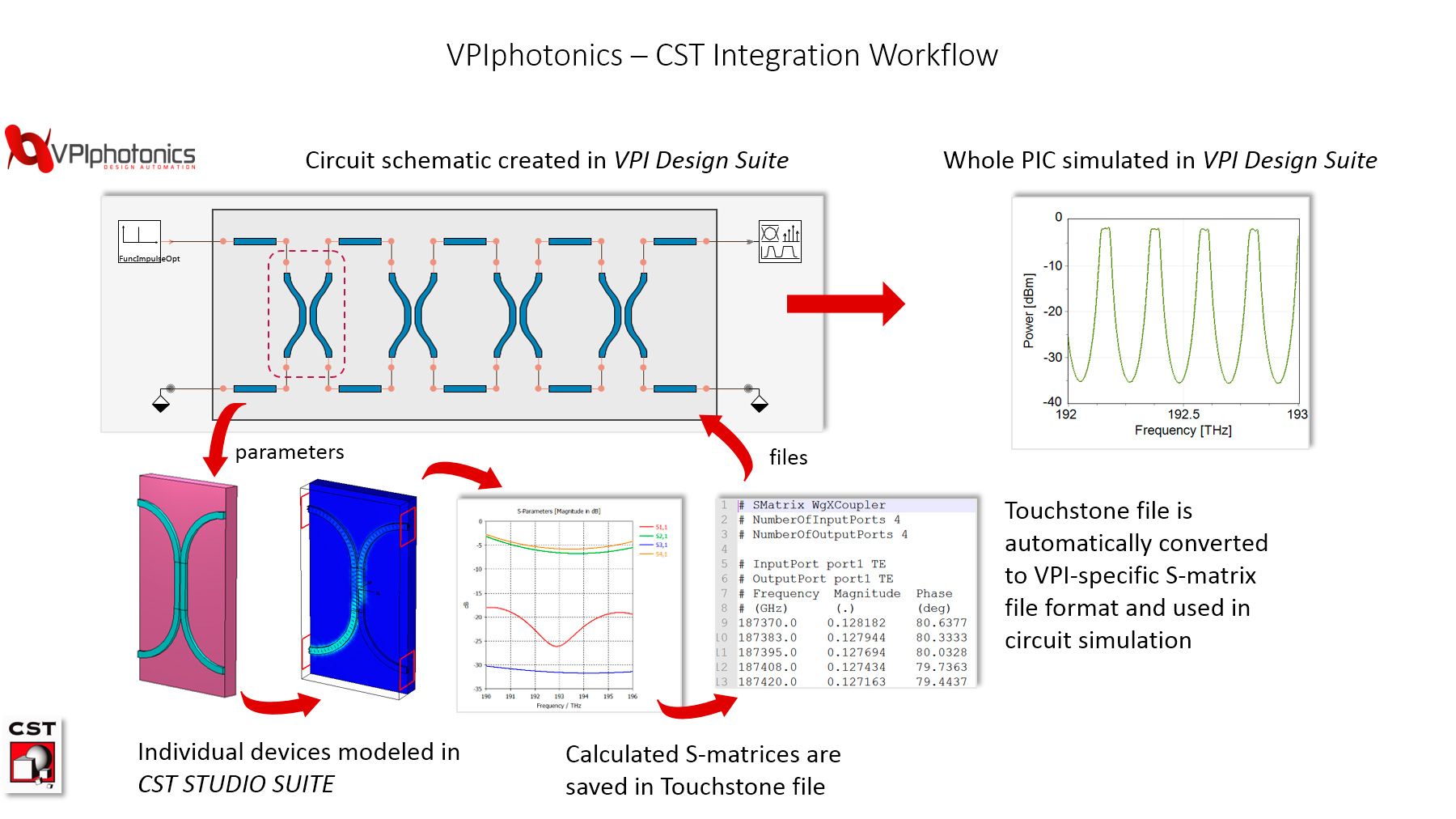VPIphotonics and CST Partner for PIC Design Automation

The above diagram is a single framework approach to integrated photonic component circuit simulation and analysis by VPIphotonics and CST.
VPIphotonics and Computer Simulation Technology GmbH (CST), part of the SIMULIA Brand of Dassault Systèmes, have announced their partnership to seamlessly couple full-wave photonic device simulation and overall circuit simulation and analysis of integrated photonic components and subsystems within a single framework. The announcement was made today at OFC 2018 in San Diego, California (USA).
Highly-integrated photonic circuits are are increasingly a part of long-distance data transport and next-generation data centre component design; this trend is expected to accelerate in the future. The design of complex circuits involves multiple steps, including analysis of the overall circuit simulation and performance, which requires accurate models and realistic characteristics for each embedded element. These circuit elements are typically based on information from process design kits (PDKs) provided by foundries. Often, full-wave photonic simulation is needed to extract accurate characteristics driving the more abstract element models on circuit-level, or to study the temperature dependence of individual components being embedded in the integrated photonic circuit.
VPIphotonics Design Suite (VPI-DS) delivers advanced simulation of the photonic circuits including purely passive, active, or even hybrid subsystems and systems. CST STUDIO SUITE® performs highly accurate full-wave 3D photonic and multi-physics simulation. Linking both tools together enable engineers to combine these simulation capabilities within one single framework.
If a scattering matrix does not exist for a particular element configuration, for instance, VPI-DS will automatically create ready-to-run projects that can be simulated using CST advanced solver technology, with methods including FIT/FDTD, FEM, amongst others. Results from CST STUDIO SUITE are automatically communicated back to the waiting circuit simulation running in VPI-DS. VPI-DS ensures that unnecessary full-wave recalculations are avoided by checking whether the characteristics of the particular element have already been calculated.
Alternative case studies and various design optimizations can be efficiently executed using the VPI-DS built-in parameter sweeps and optimizations as well as a sophisticated Python-based scripting environment.
"I am excited to see this link become available to our customers," said Dr. Frank Scharf, Principal Applications Engineer at CST. "VPIphotonics Design Suite is an extremely powerful and versatile tool. The automated access to rigorous 3D simulation from within its leading circuit design environment allows the engineer to verify the compact model behavior for critical components, or to determine component behavior past the limits of existing compact models."
"VPIphotonics is proud to integrate its best-in-class photonic circuit simulation solutions with CST Studio Suite," said Dr. André Richter, General Manager of VPIphotonics. "This collaboration continues our strategy to provide practical and cost-effective design methodologies that meet the needs of our joint customers and the photonics community as a whole."



































